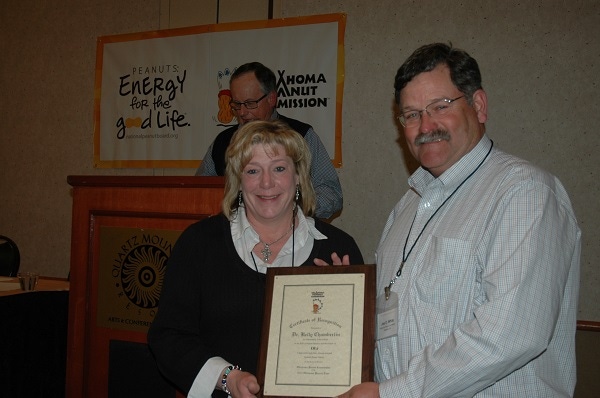
A new high oleic Spanish peanut variety will be released for foundation seed development this year and available for commercial production in 2015.
Ole, developed with financial support from USDA/ARS, Oklahoma Agricultural Experiment Station and the Oklahoma Peanut Commission, is “a true Spanish peanut with excellent yield and improved disease resistance,” says Kelly Chamberlin, head scientist for the USDA/ARS Center for Peanut Improvement at Stillwater.
For more on peanuts and other crops, please check out Southwest Farm Press Daily and receive the latest news right to your inbox.
Chamberlin, in a report to the Oklahoma Peanut Expo recently in Lone Wolf, Okla., said Ole will “fill a niche,” while she and other plant breeders develop an even better high oleic Spanish variety. “This is not the best Spanish line,” she said, but it will add a “true Spanish” high oleic peanut to grower options.
A breeding goal is to have high-yielding, disease resistant, good quality, high oleic peanuts in every market type peanut.
Ole offers a variety that yields better than Olin, a high oleic variety released from the Oklahoma Center back in 2002. Tamnut OL06, a larger seeded Spanish type that produced a lot of jumbo peanuts “but not much for the medium market,” followed.
Ole, in six years of variety trials has averaged more than 400 pounds per acre more than Olin. “It averaged $60 per acre more revenue per acre over those six years and in three locations, compared to Olin,” Chamberlin said. Characteristics include improved resistance to Sclerotinia blight, good pod rot resistance, and average 120-day maturity after planting. High oleic value is 20:1 O/L ratio. Seed size is 47.6 grams per 100 seed.
Peanut farmers have good seed for ’14 planting
High oleic qualities, she said, will offer better shelf life for the peanuts, including peanuts used in candy and candy bars, an issue with consumers.
“A high oleic Spanish peanut is in demand,” she said. “It is a good trait to have for the candy market.”
Spanish peanuts yield less than runners and other market types but buyers may offer premiums.
Also of interest:
Integrated approach critical for resistant weed control
About the Author(s)
You May Also Like






